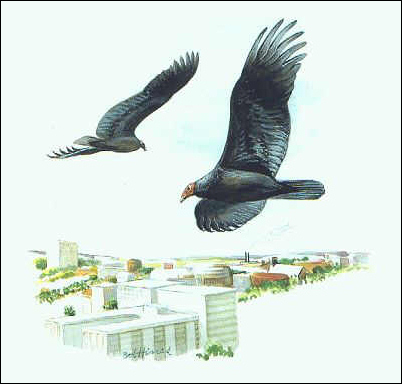
Many people dream of falling and consider a dream like this to be a nightmare. Such dreams may harken back to our ancestry as tree-dwelling primates, for although we fear falling, some animals spend much of their time in free fall and presumably don't give it a second's thought. These animals are the soaring birds, such as hawks and vultures.
Now, you may consider it strange that soaring and falling go together, but in relation to the surrounding air, falling is exactly what these creatures do. Parcels of air rise because of such things as heating over hot spots on the ground or being forced upwards by mountains or ridges. The soarers, wings outstretched, fall through such rising air, just as they would through still air, but their large wings relative to their body weight allows them to fall more slowly than the air rises. The result? A ride costing only the minor muscular adjustments necessary to keep the fall-rate as low as possible. Gives a whole new perspective to the old warning about riding for a fall!

Contributor: Arthur H. Harris, Laboratory for Environmental Biology, Centennial Museum, University of Texas at El Paso.
Desert Diary is a joint production of the Centennial Museum and KTEP National Public Radio at the University of Texas at El Paso.

Painting of Black and Turkey vultures soaring. Image from "Fifty Birds of Town and City", U.S. Fish and Wildlife Service, courtesy of YankeeHarvest.com.